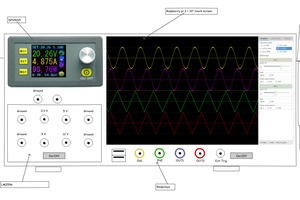There are many videos available on YouTube telling you how to check such an old and simple crankshaft, to sum up you have to ensure:
- that all bearings are still okay
- that the crankshaft stays within tolerances when turning around
I checked the bearings by the "noise" check - ensuring that there is no metal-like noise when hitting the crankshaft. This noise would indicate a lot of tolerance in the bearings itself, something to avoid. Next test: Make sure that the crankshaft stays within limits to ensure roundness. And for this test, you normally need a specialised crankshaft test stand.
The crankshaft sits on four bearings, allowing free rotation to test it with the measurement gauges.
As these are quite expensive, I decided to give 3D-Printing an option here - and the results are promising. I will use my double checked crankshaft to restore the engine.
 Heinz-Peter Liechtenecker
Heinz-Peter Liechtenecker
 Sanpi
Sanpi
 smashedagainst
smashedagainst

 DoctorDre
DoctorDre